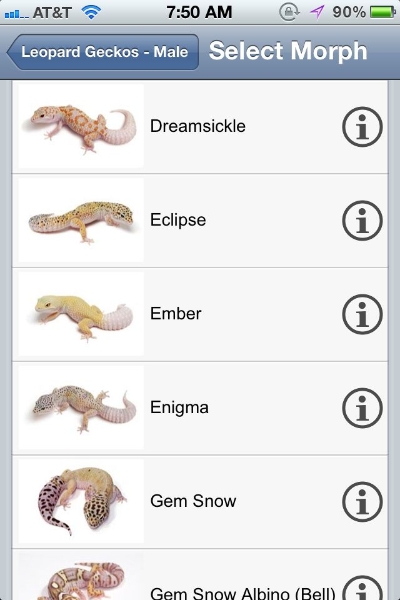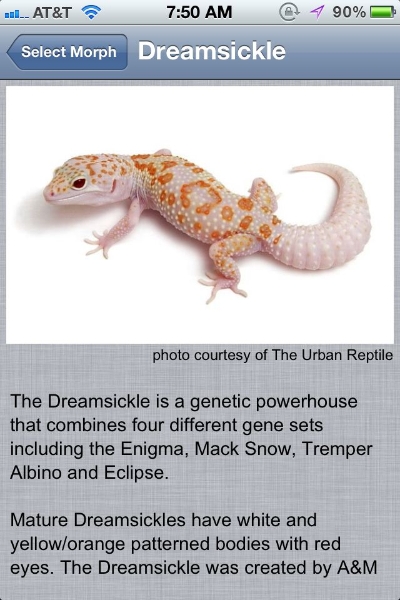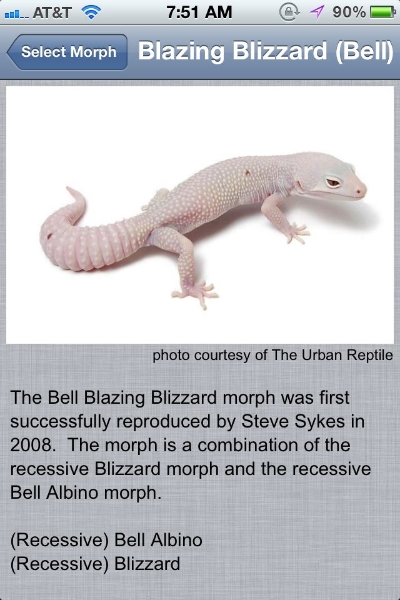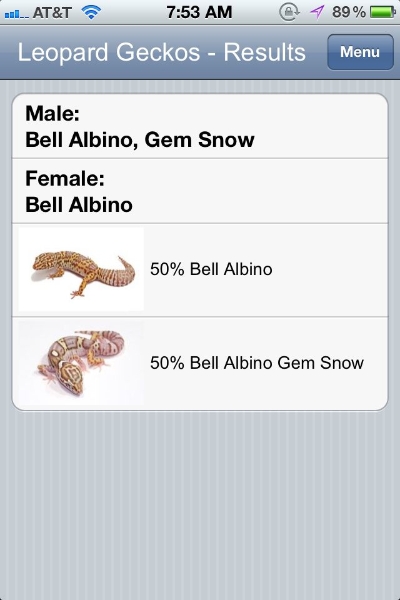With the number of new genetic mutations that have exploded for some gecko species, the question comes up more and more frequently: “What will I get if I pair up . . . “ This was a simple question to answer years ago when the genetic combinations were limited and largely restricted to recessive and dominant traits. The picture has been complicated by the rise of co-dominant and polygenetic traits, not to mention characteristics that are similar visually.
[ad#superworm]
Enter the Reptile Calculator, the latest of a small number of online sites that assist in charting the outcomes of different genetic combinations.
Background
The Reptile Calculator was developed and produced by a partnership of three reptile enthusiasts: Brittney of Pacherp.com and Reptileculture.com, Andy of LoveGeckos.com and Justin of LongIslandGeckos.com (who writes the monthly Breeder Chronicle for Gecko Time). A more detailed description of their collaboration can be found here.
In April 2012 they went public with a morph calculator for leopard geckos, African fat tail geckos, corn snakes and western hognose snakes that can be accessed online (http://www.reptilecalculator.com/) or as an “app” with either iphone or Android. This review has been done using the application for the iPhone.
Features and Operation
The calculator is quite simple to operate. After choosing the species of interest from the four species currently available, the menu gives the option of selecting all genetic features for the male and the female. Genetic features include both homozygous and heterozygous options and are grouped as “recessive”, “dominant” or “co-dominant”. In addition, features can be selected either individually or by popular morph name. For example, a leopard gecko can be genetically “described” either as a “Bell albino, white & yellow” or as an “aurora”. Once the genetic characteristics of both the male and female have been chosen, return to the menu and choose “results”. The possible genetic combinations will be listed along with the statistical possibility of each.
Here is an example, from the African fat tail morph list:
If a breeder is considering pairing a male Oreo Ghost with a female Patternless White Out het for Amelanistic the outcome is reported to be as follows:
- 25% White Out het Amelanistic Ghost Oreo Patternless
- 25% White Out het Ghost Oreo Patternless
- 25% Wild Type het Amelanistic Ghost Oreo Patternless
- 25% Wild Type het Ghost Oreo Patternless
In addition to providing a list of genetic characteristics, if the user chooses the “select morph” option, a list of morphs will appear, some with pictures (additional pictures will be supplied in later versions). Touching the “information” icon for each morph leads to a screen which describes the morph characteristics along with a high-quality, credited picture of an example. Genetic results can be provided either as a list of genetic characteristics or as a list of named morphs where applicable. The “settings” menu provides an option to turn the “trade names” feature on or off.
What It Does; What It Doesn’t Do
The Reptile Calculator is a simple and elegant device for determining the possible outcomes of a great variety of genetic combinations. It does what any well-informed breeder with a basic understanding of genetics is able to do with a piece of paper and a pencil. However, the number of genetic combinations has grown so great, that the paper and pencil method is becoming more complex and challenging every year. The Reptile Calculator is a great solution for that level of complexity.
Even if a breeder is determined to figure out the outcomes independently, the Reptile Calculator also serves as a library of morphs that should only improve with time. As a breeder who still prefers the paper and pencil method, I find the Reptile Calculator to be worth having as a means to keep me current with the genetics behind the ever-growing list of morph “trade names”.
There are several things a potential customer should realize the Reptile Calculator does not do, not because of any failure on the part of the Calculator, but because it is deliberately designed not to do these things:
♦ The Calculator does not include polygenetic traits (sometimes called “line bred” traits) in its list of characteristics. This is because each polygenetic trait manifests itself on a continuum of influence: a “tangerine” leopard gecko produces offspring that range from no tangerine color, to full tangerine color. These results are impossible to calculate, and the device is called a “Calculator” for a reason. The developers have, however, expressed interest in including polygenetic traits in their library of morphs even though they won’t be usable in the calculation. This feature should be added to later versions.
♦ The Calculator does not tell the breeder what morph his or her offspring actually is. In some instances, the breeder will be able to tell just by looking at the offspring. In other cases, such as when there is a heterozygous characteristic or when two different characteristics look identical, the breeder can only give the statistical chance as to whether the gecko in question possesses the trait.
The last point above means that the Calculator can be used only as a tool, not as a substitute for knowledge and understanding about genetic traits and breeding outcomes. I expect that the developers would agree with this wholeheartedly.
The Future
Version 2 of the Reptile Calculator is already under development. Plans for the new version are reported to include polygenetic traits in the morph library (as described above) and an option for the user to upload relevant pictures of the morphs to customize the Calculator.
One exciting aspect of the development of this Calculator is the fact that the developers are active and involved in the reptile community and eager to respond to new ideas and feedback. The plans to include polygenetic traits in a limited fashion came about from a discussion on one of the popular gecko forums. The team is also very responsive to feedback and queries which can be made through their website.
I am looking forward to the new version. I would also like to see some of the background information, especially the FAQ’s ( http://www.reptilecalculator.com/reptile-calculator-questions/) that appear on the website only, added to the smart phone versions.
I highly recommend the Reptile Calculator and the cost of $3.99 for the iphone app, is both fair and reasonable.








I use this calculator and I encourage anyone from novice to experienced breeders. Let’s support this app and it’s founders, and pass the word on about it’s existence to all our herp friends.
A useful tool for all breeders. Looking forward to the new version.
I have a quick question for you. How would I put a Striped Tremper Male with a Reverse Stripe HET 100% Tremper in the calculator?
The stripe trait (which includes reverse stripe, jungle, patternless stripe, stripe and to a certain extent aberrant)is currently considered to be polygenetic so it doesn’t figure into the reptile calculator which deals with dominant, recessive and co-dominant only. Consequently, you’d only be able to put in the Tremper (and Tremper het) trait. Add to to the calculator result the possibility, which is not calculable in a statistic, of all the stripe related patterns I mentioned above.